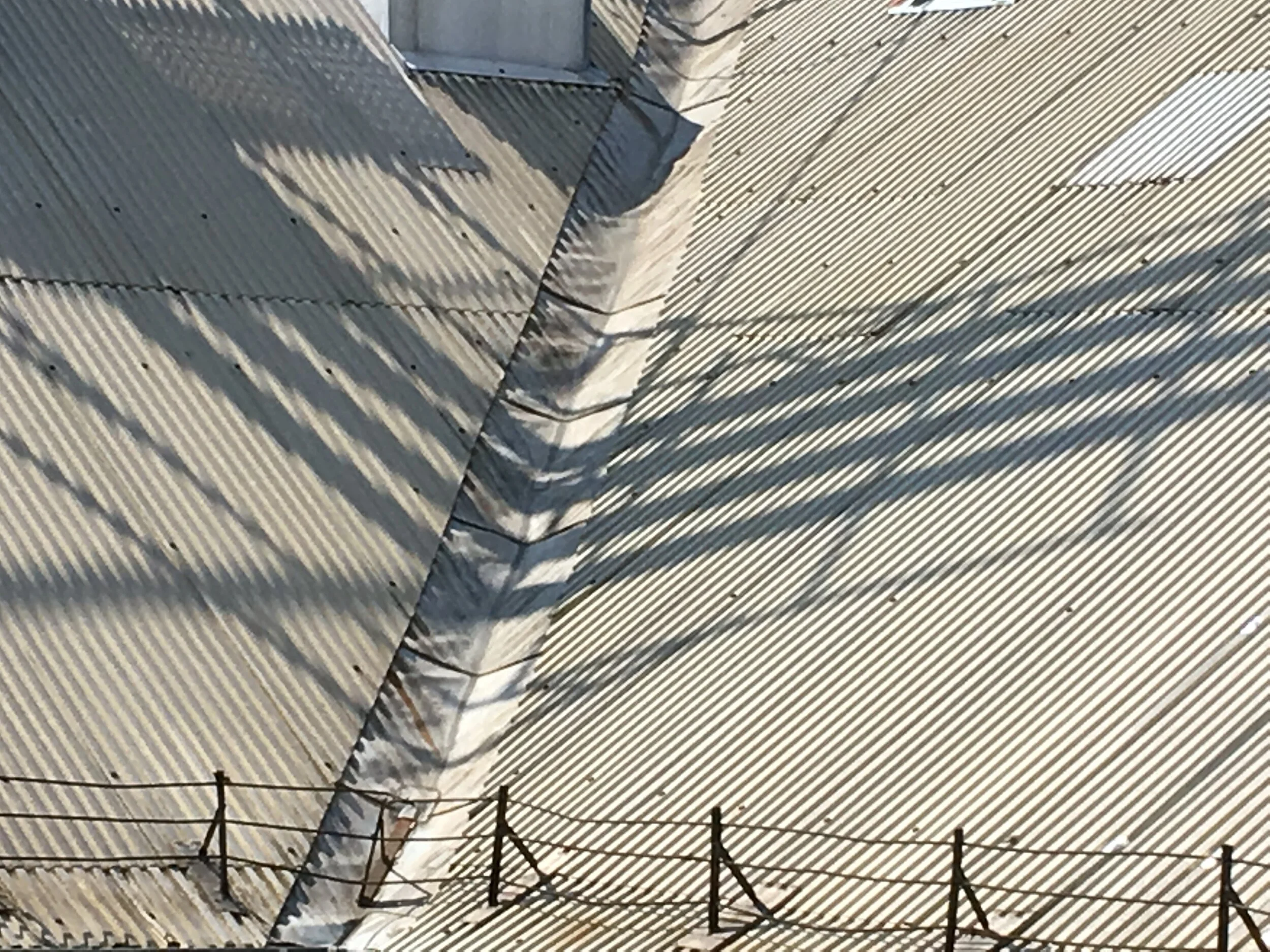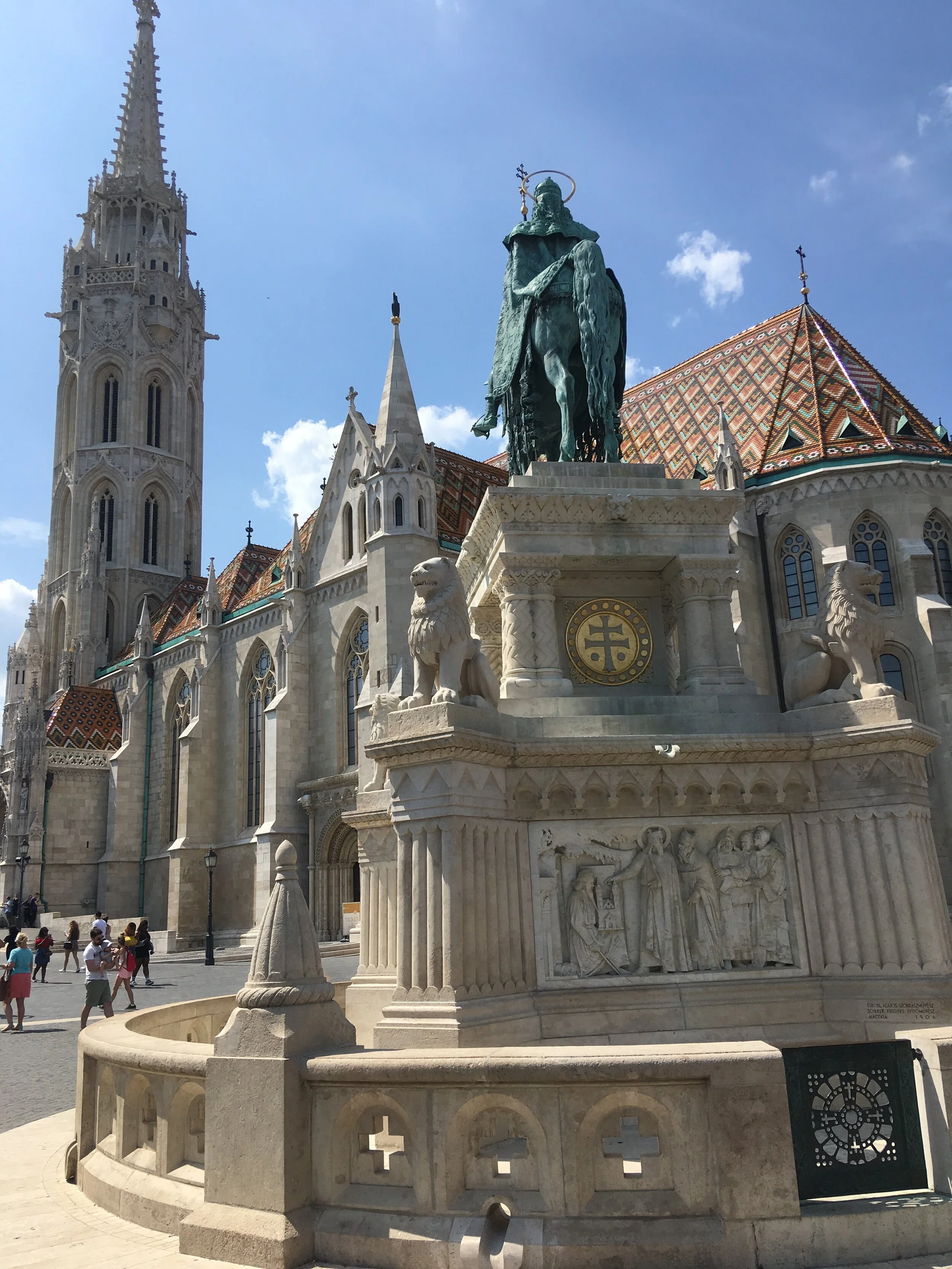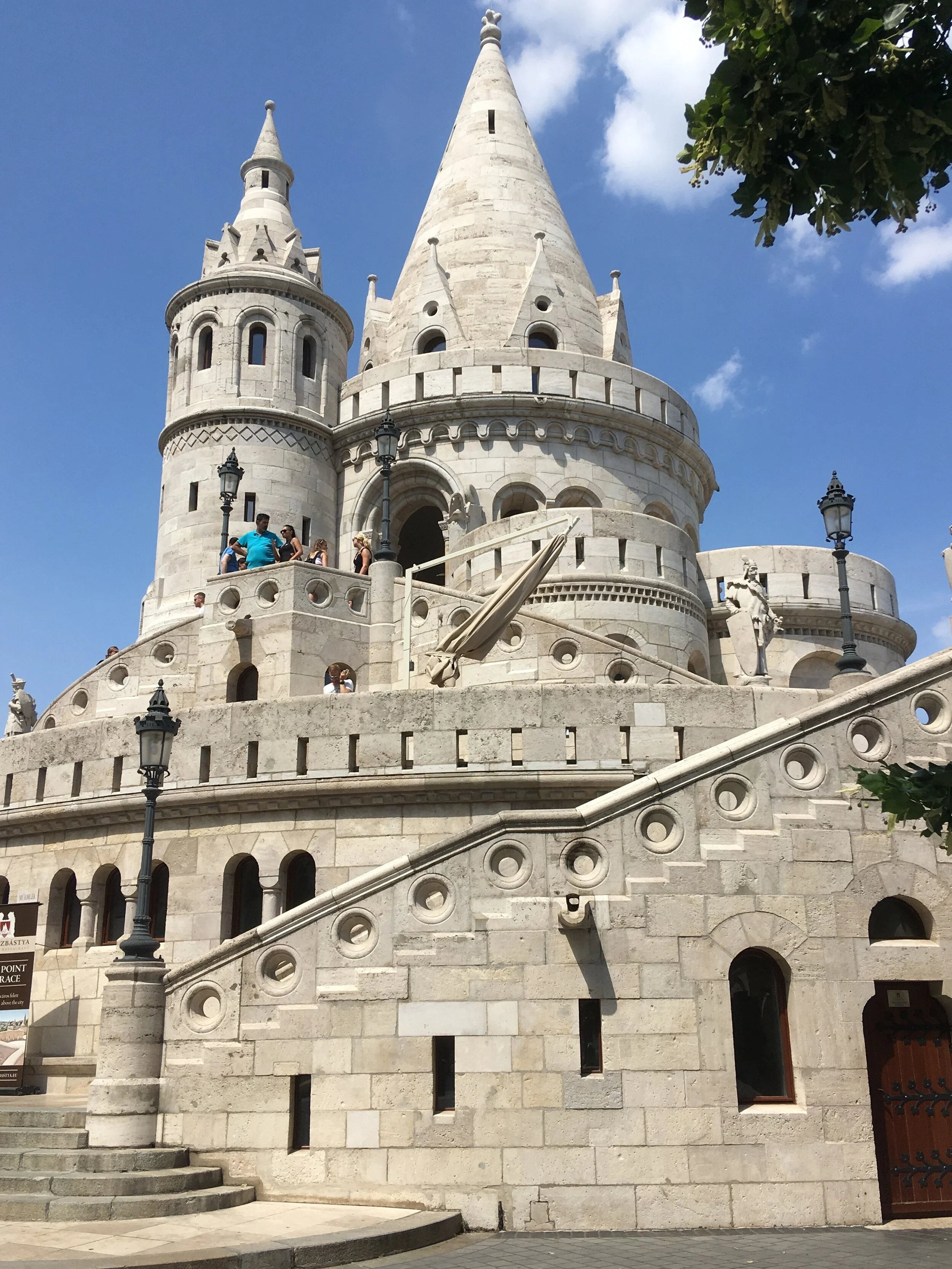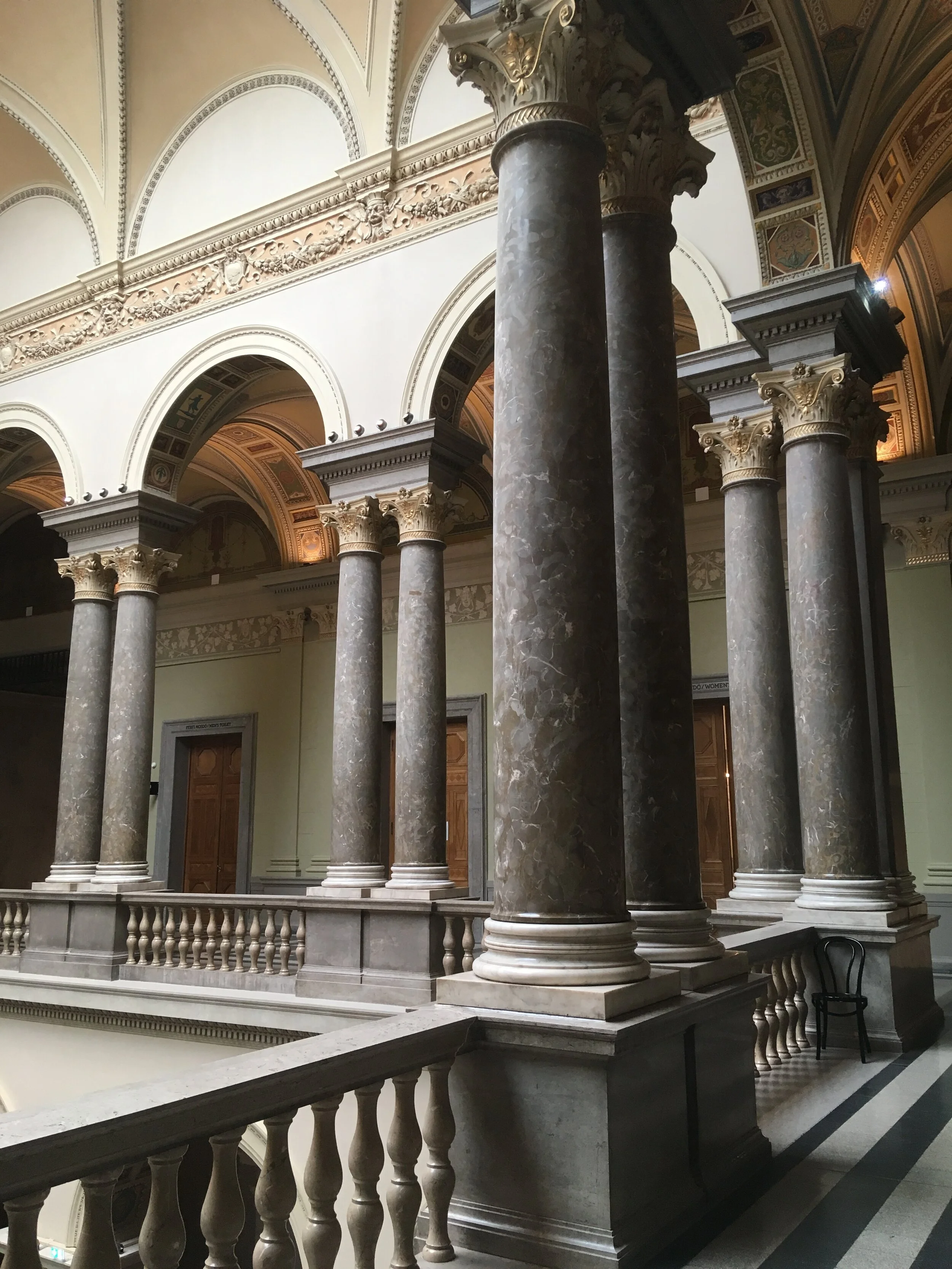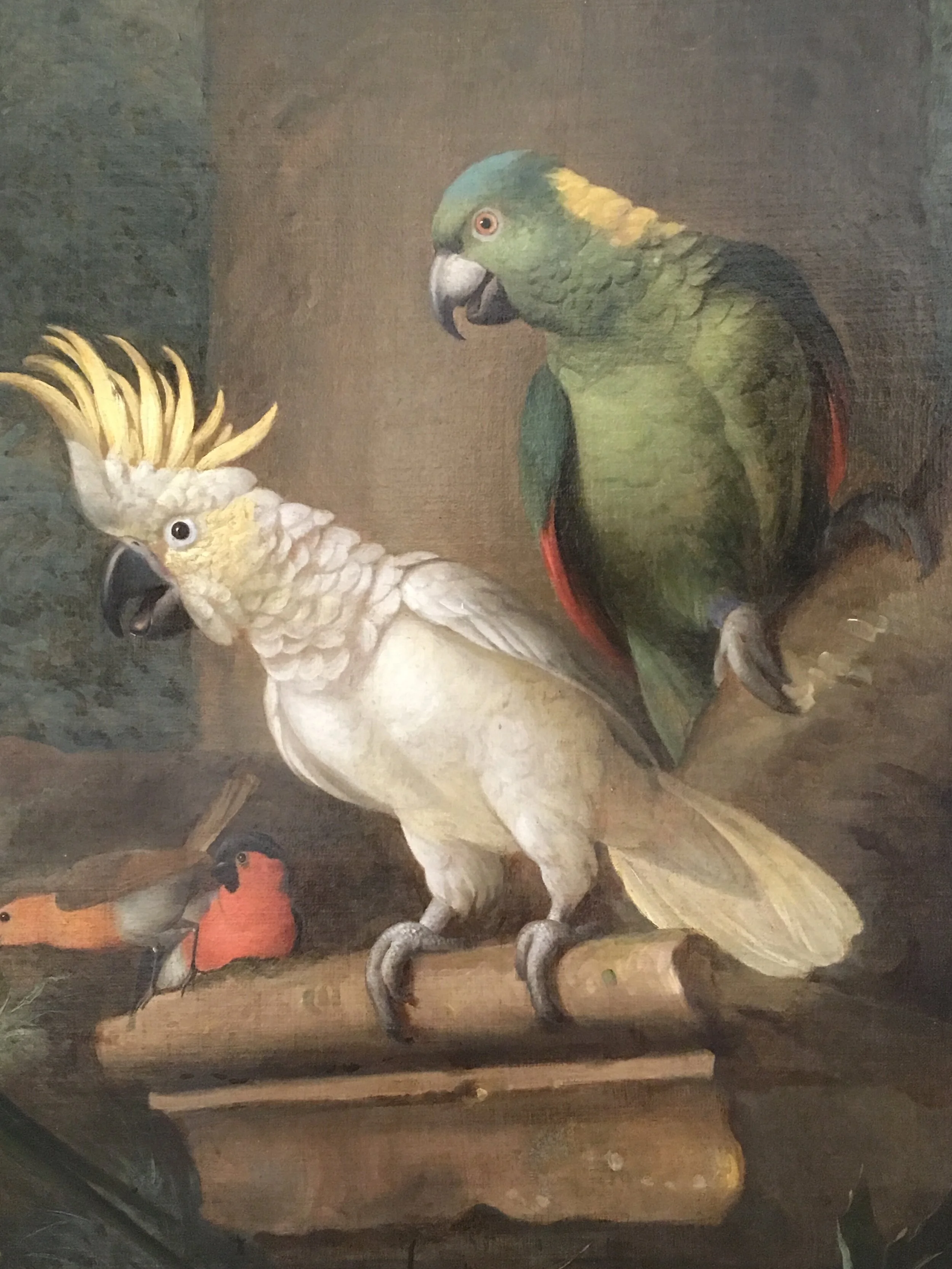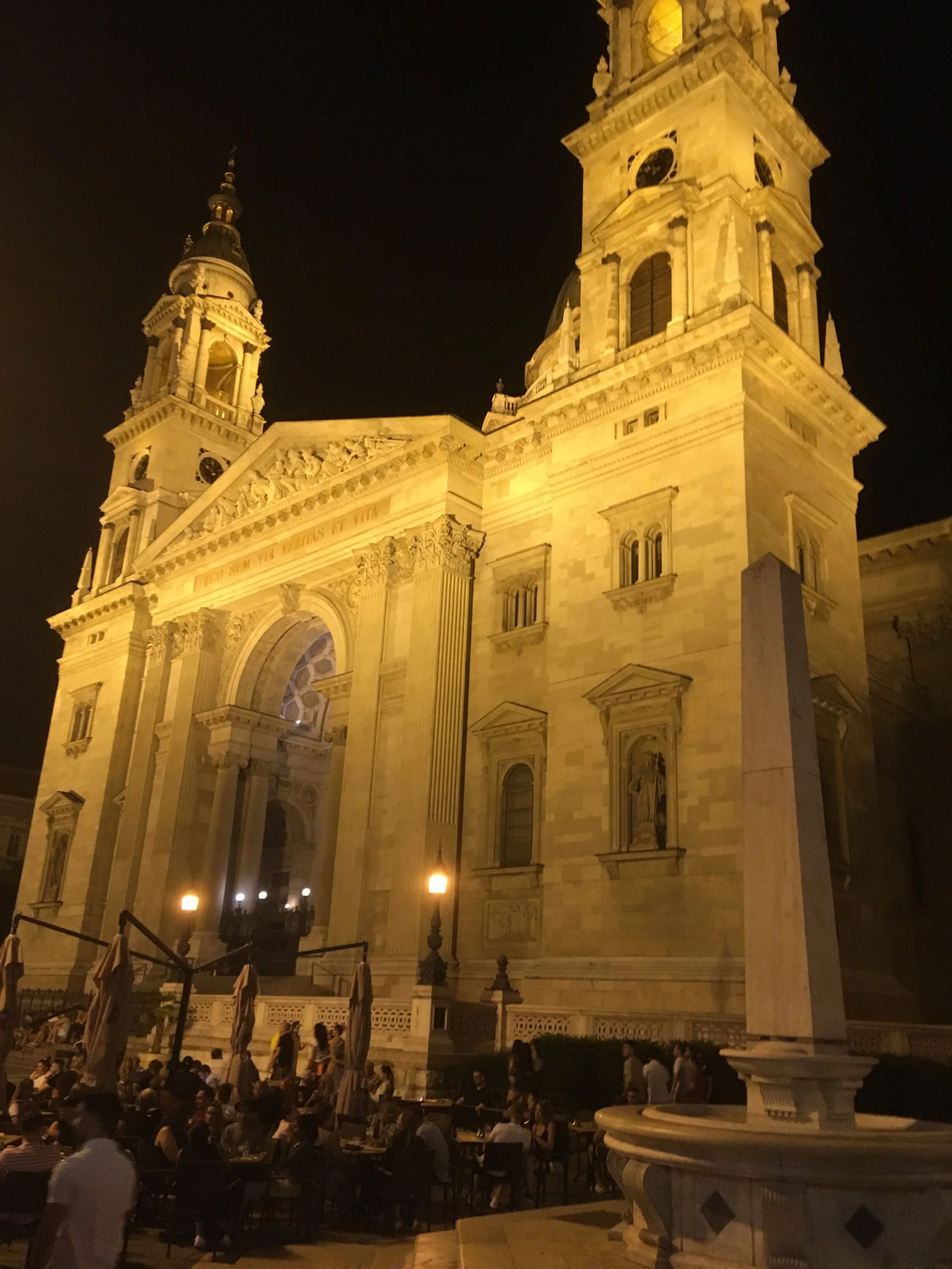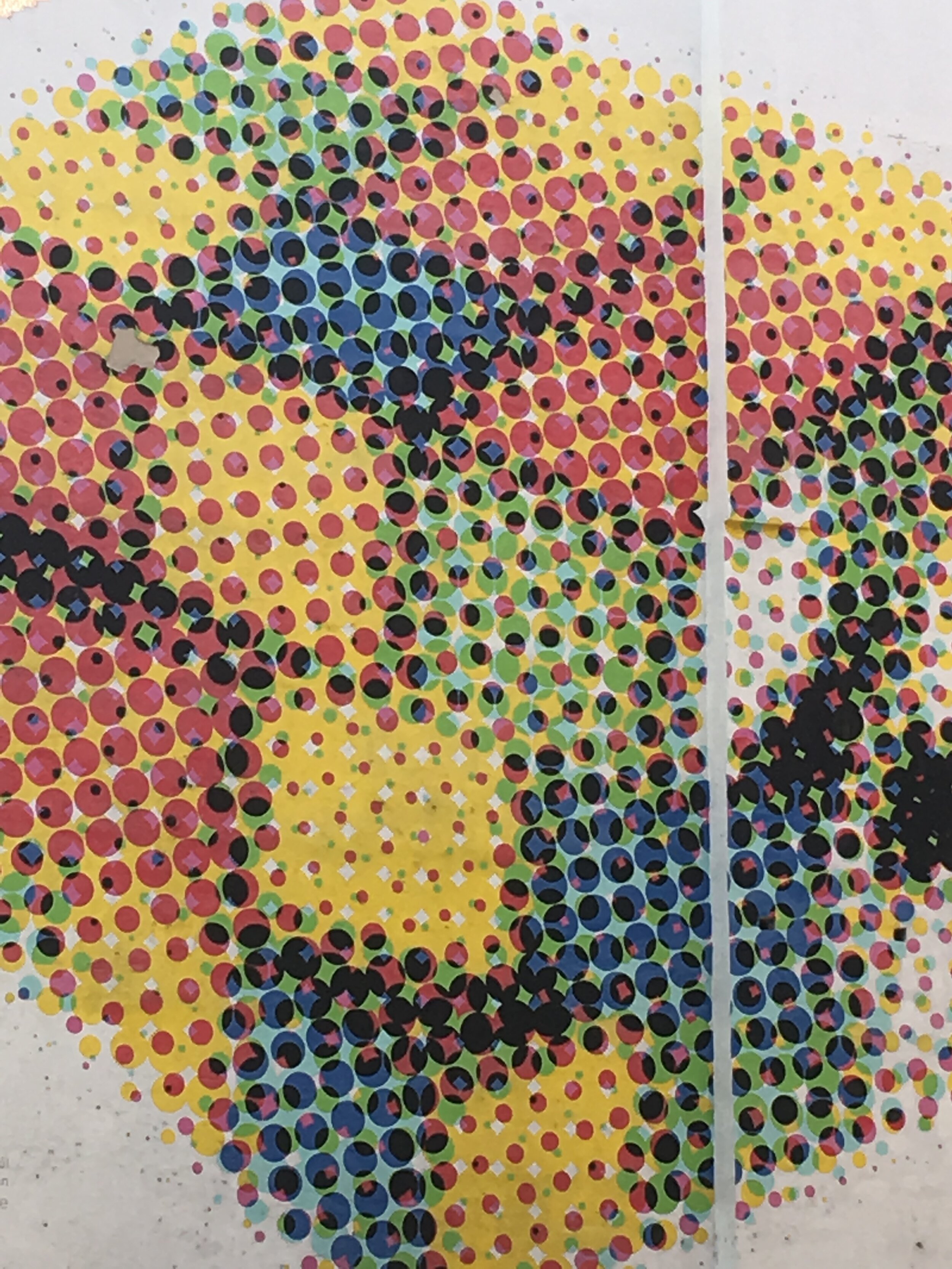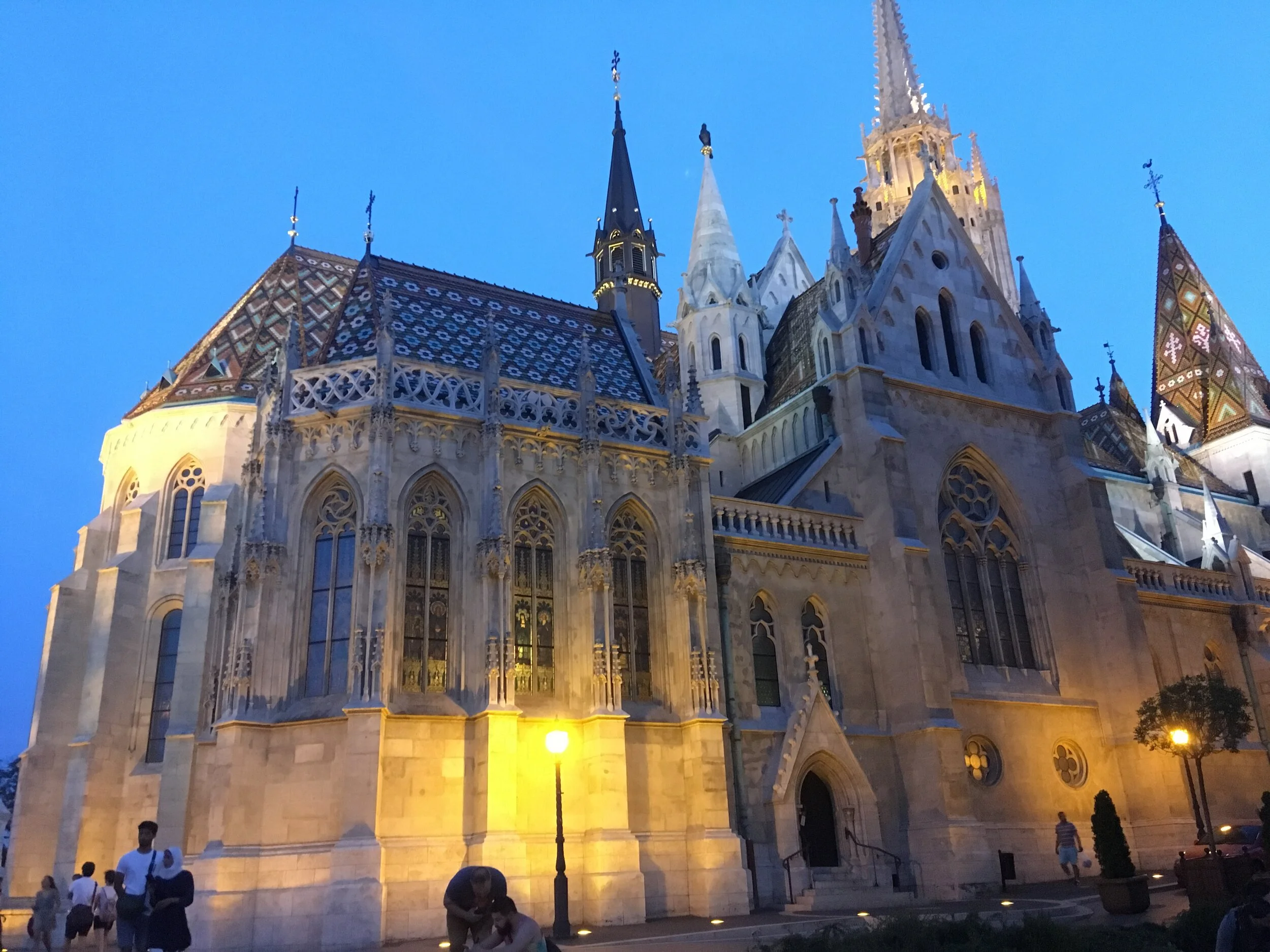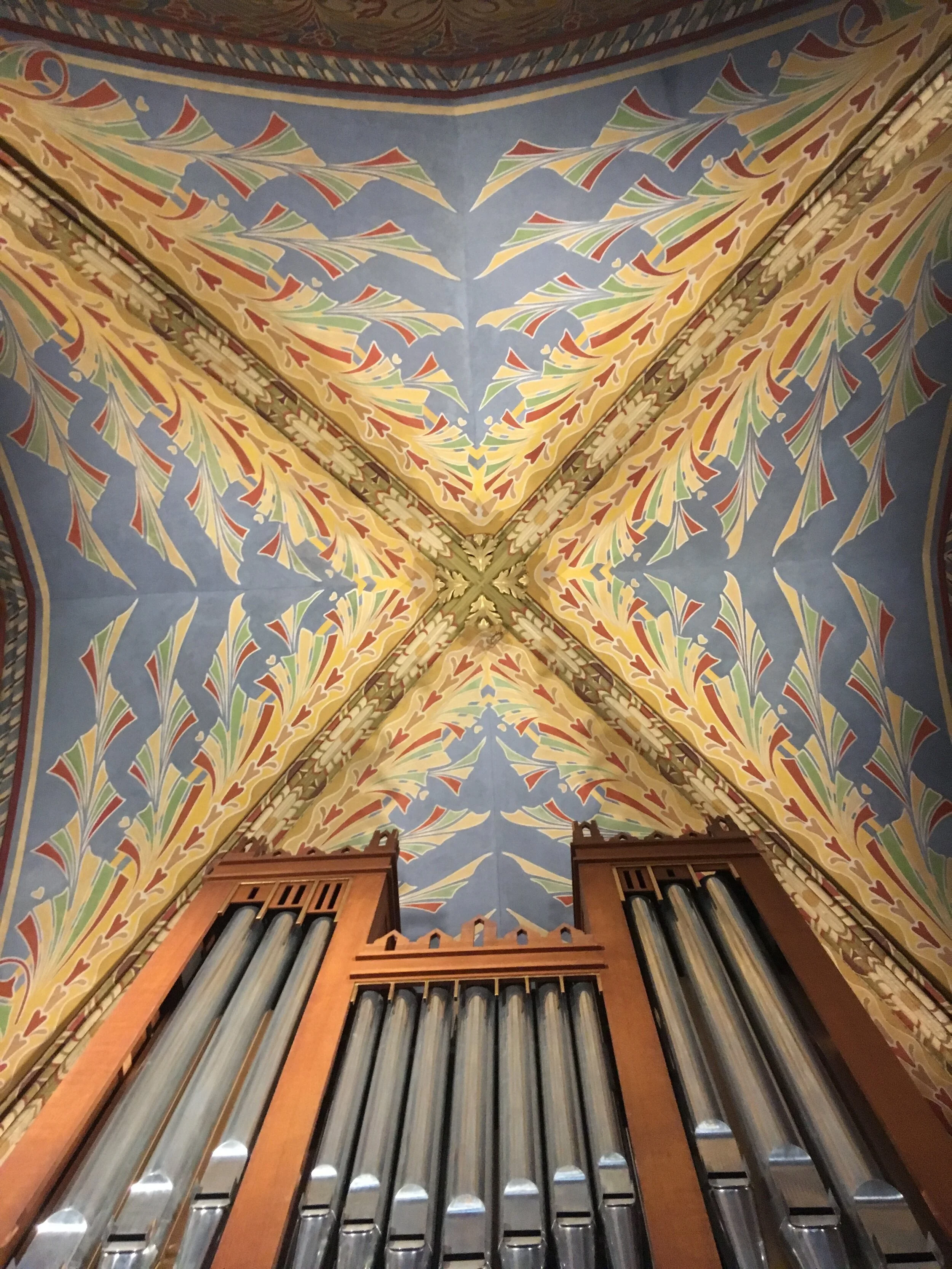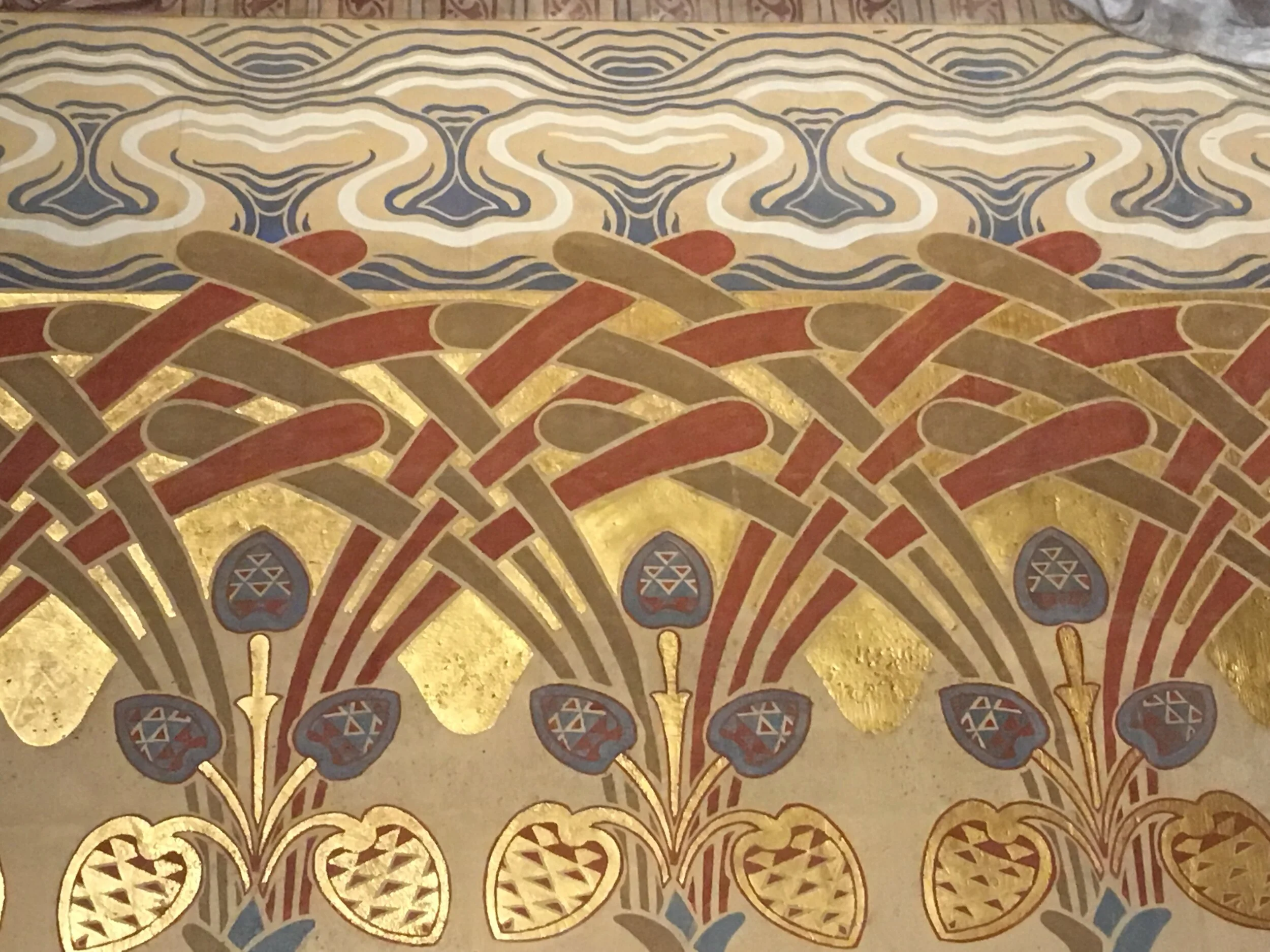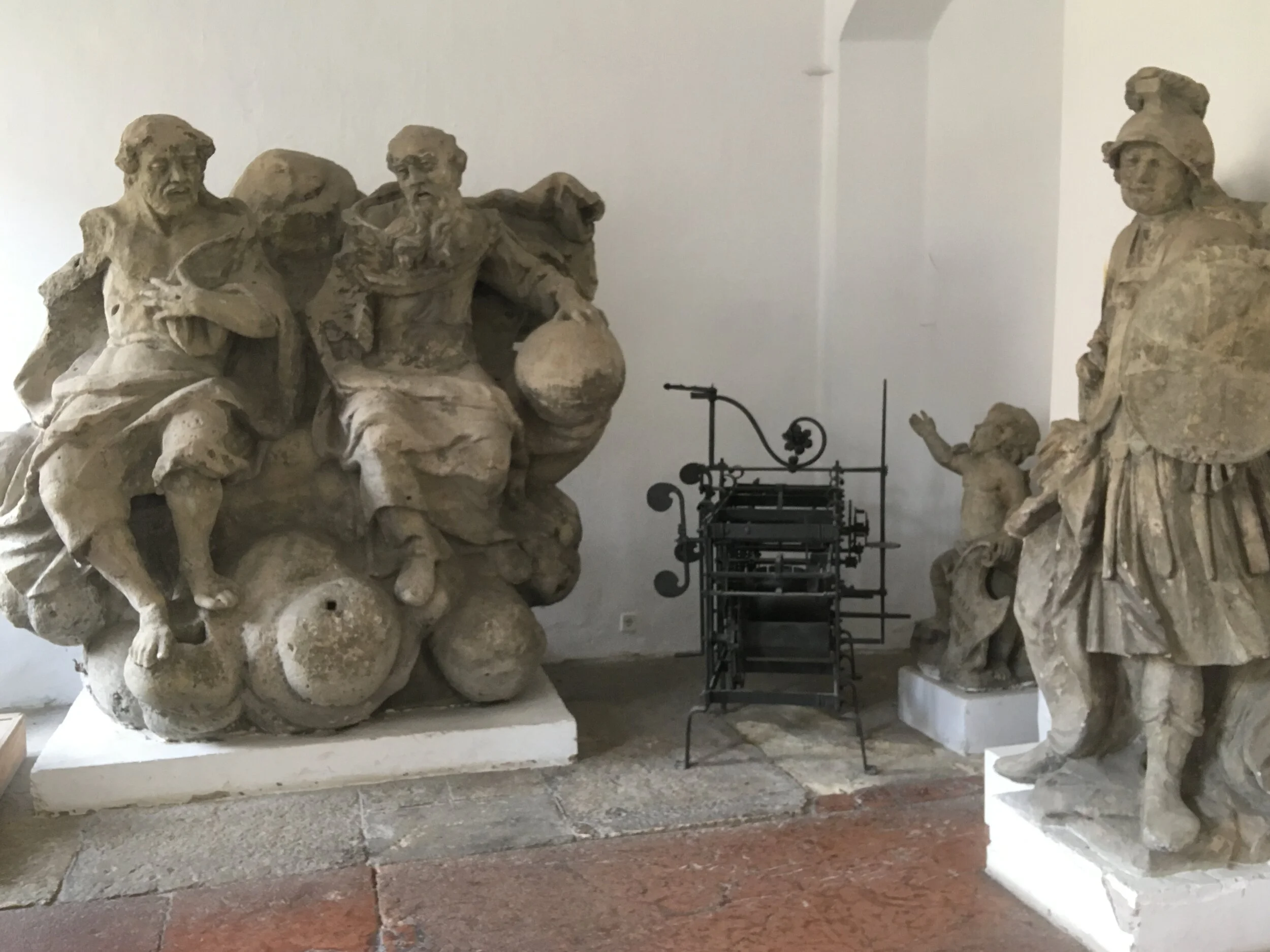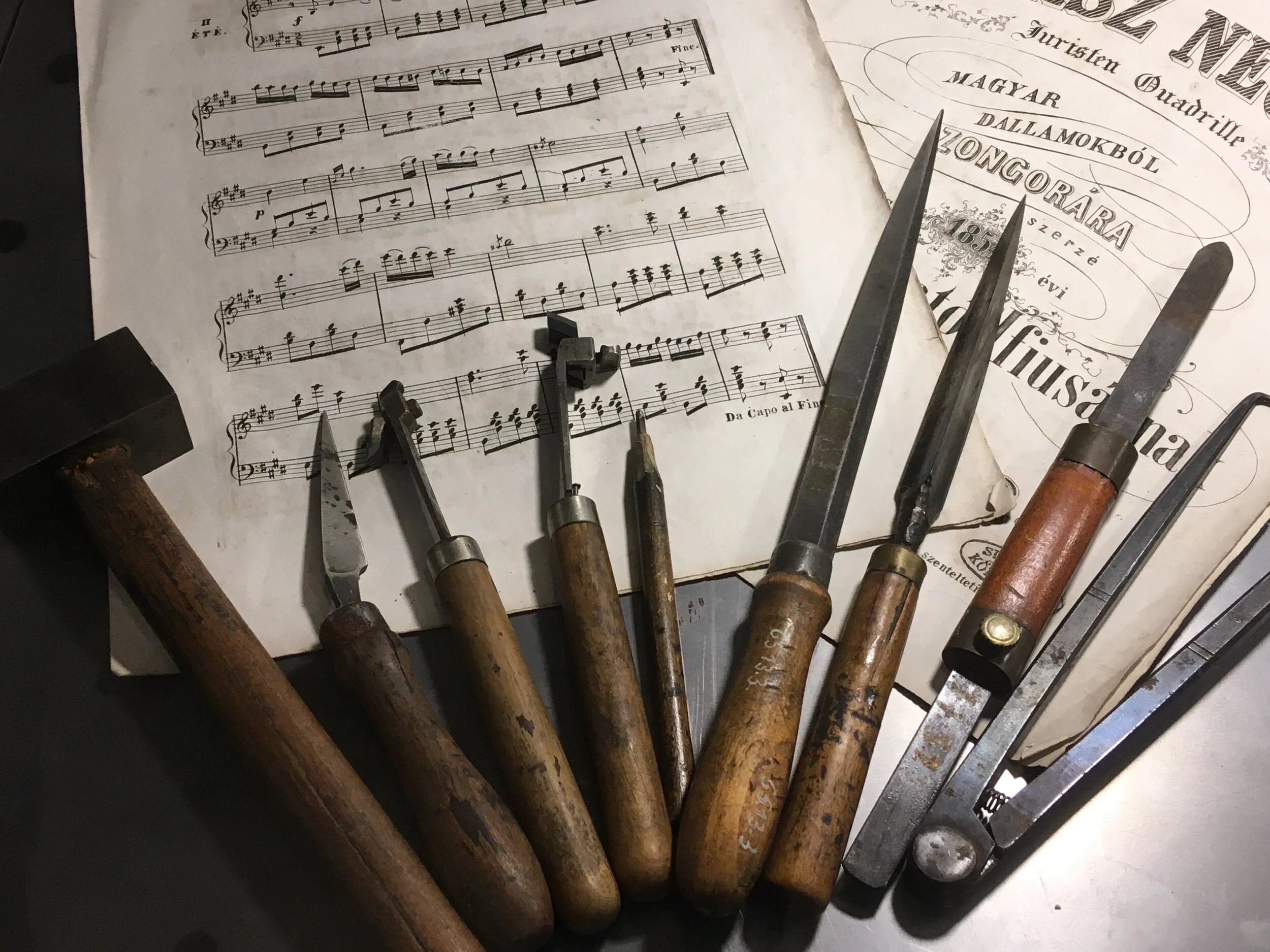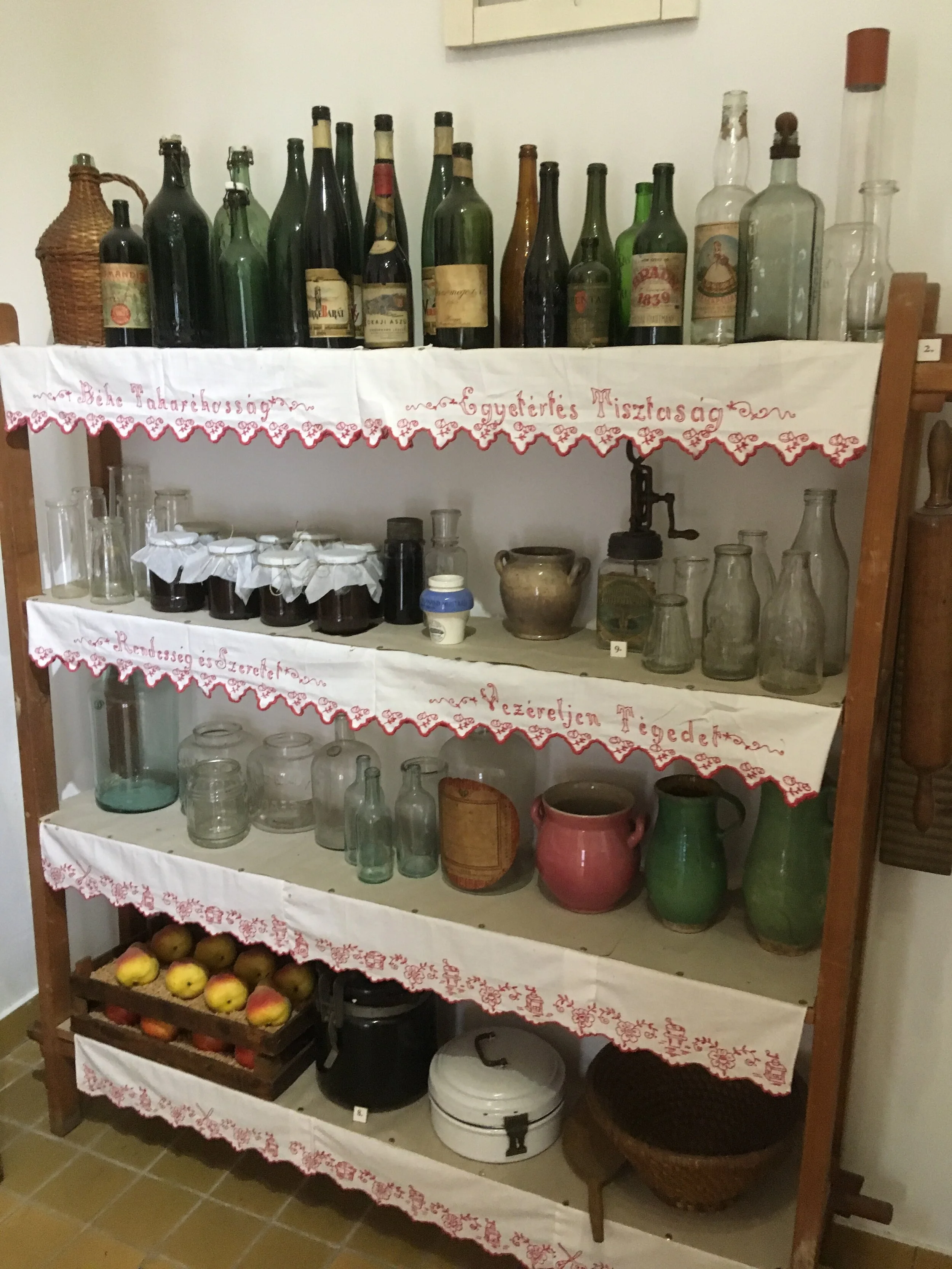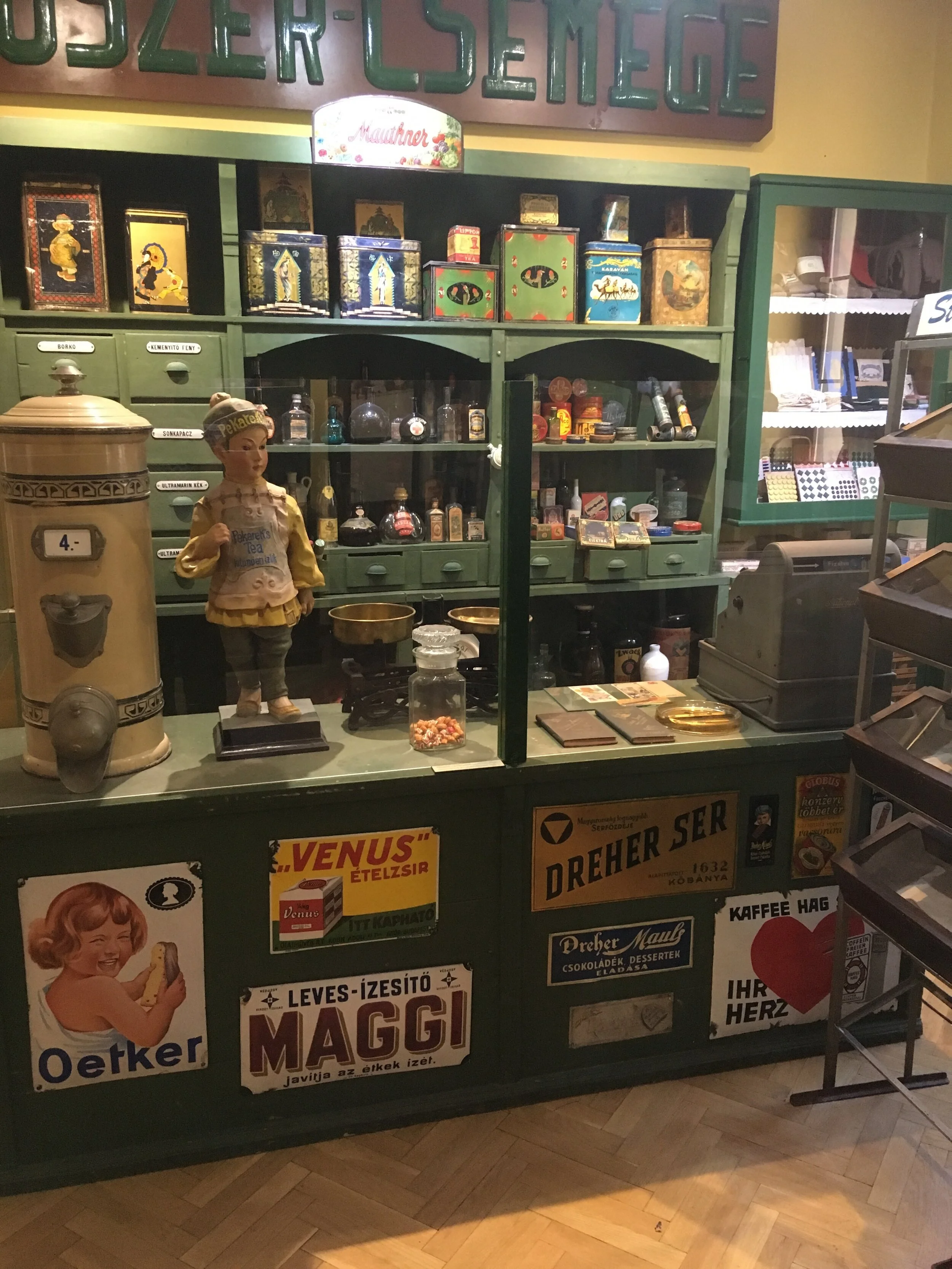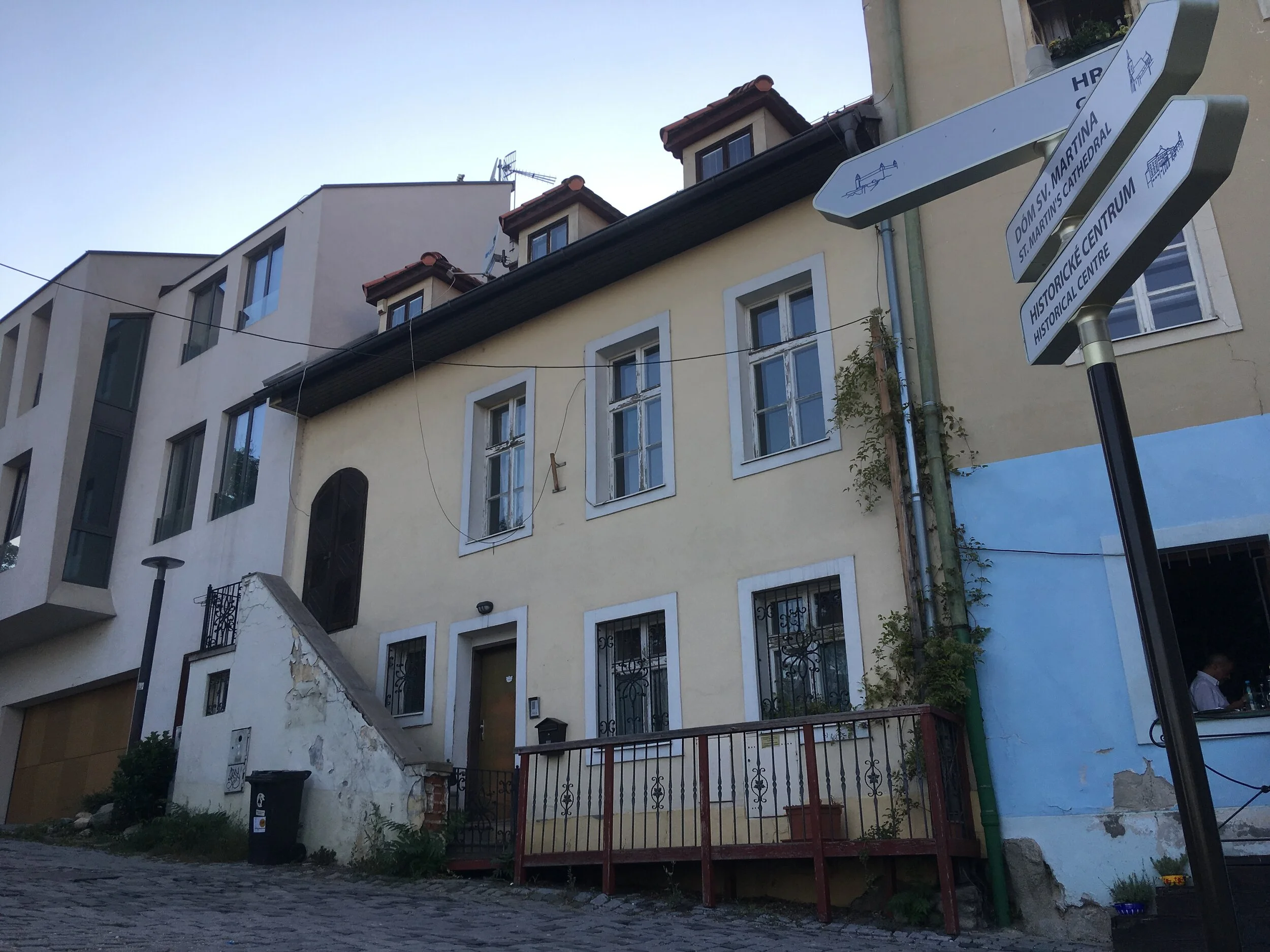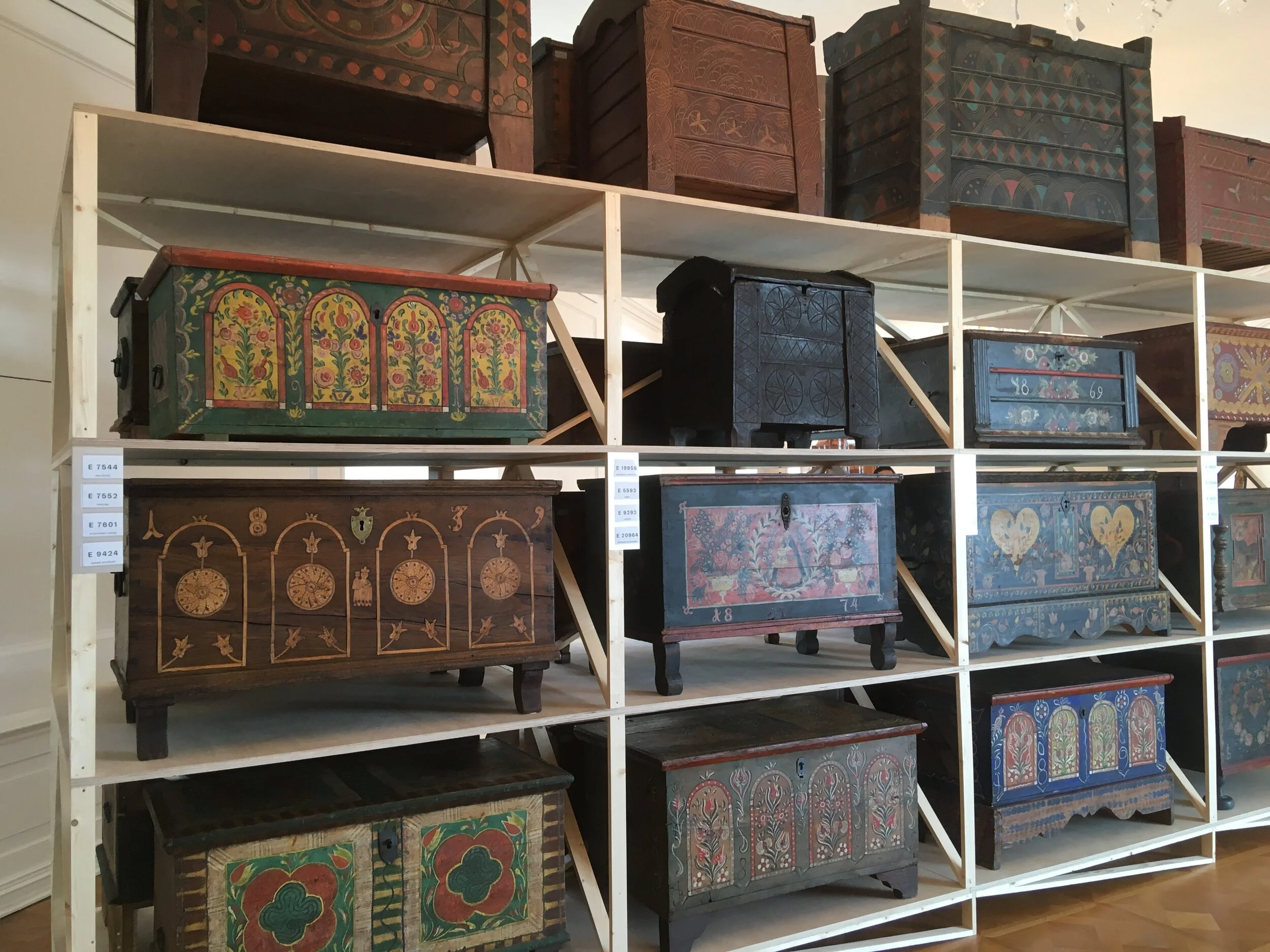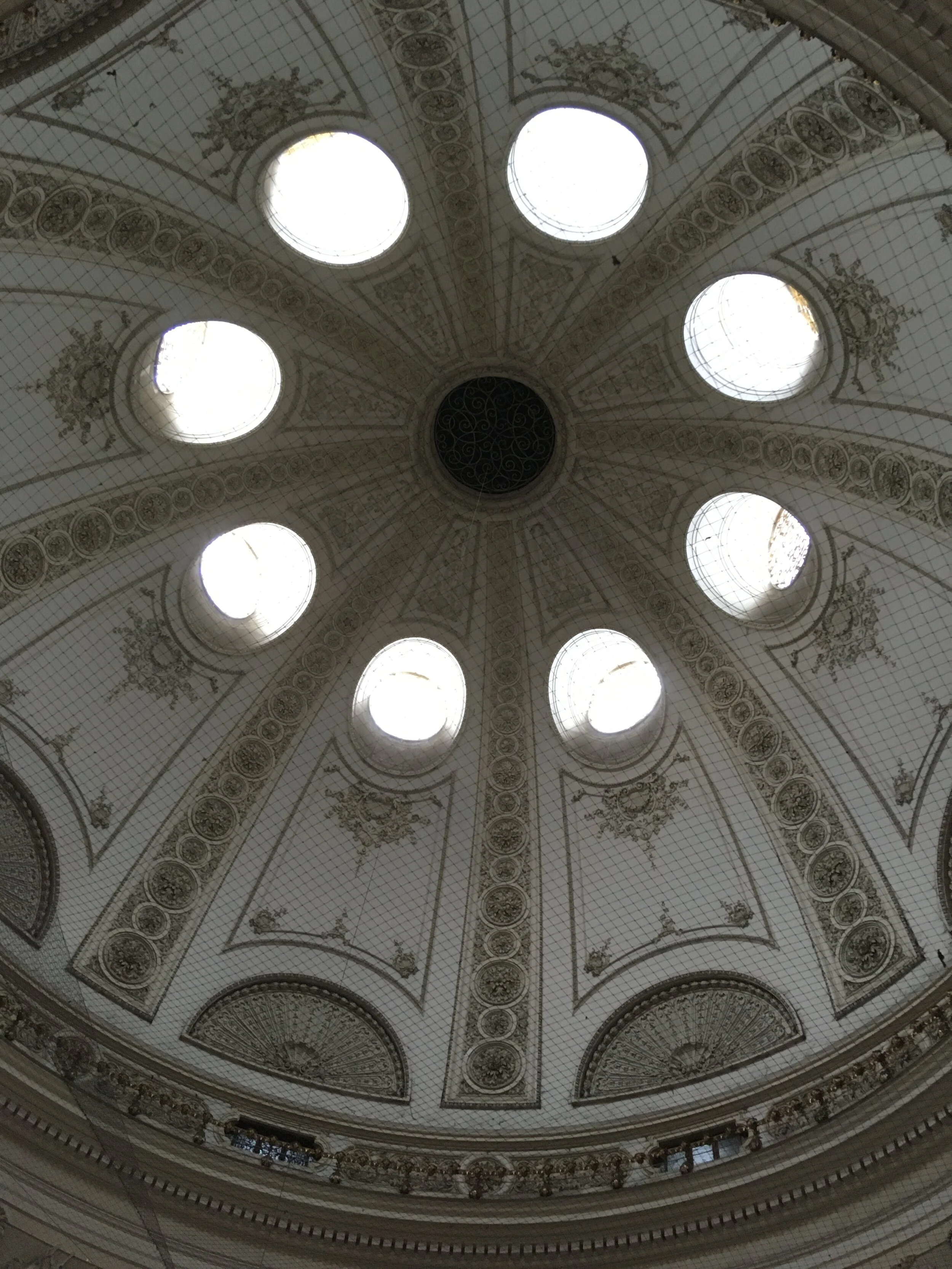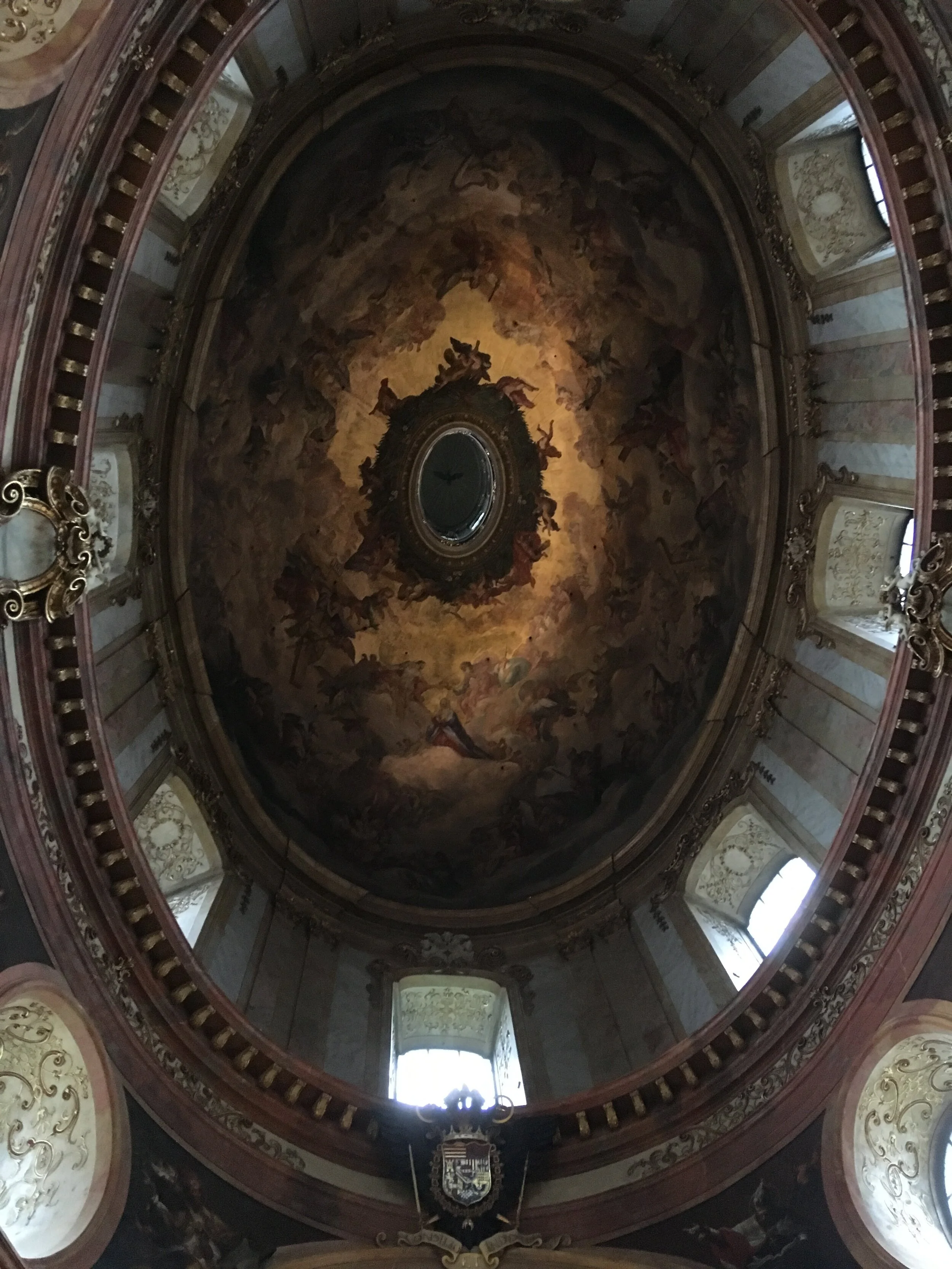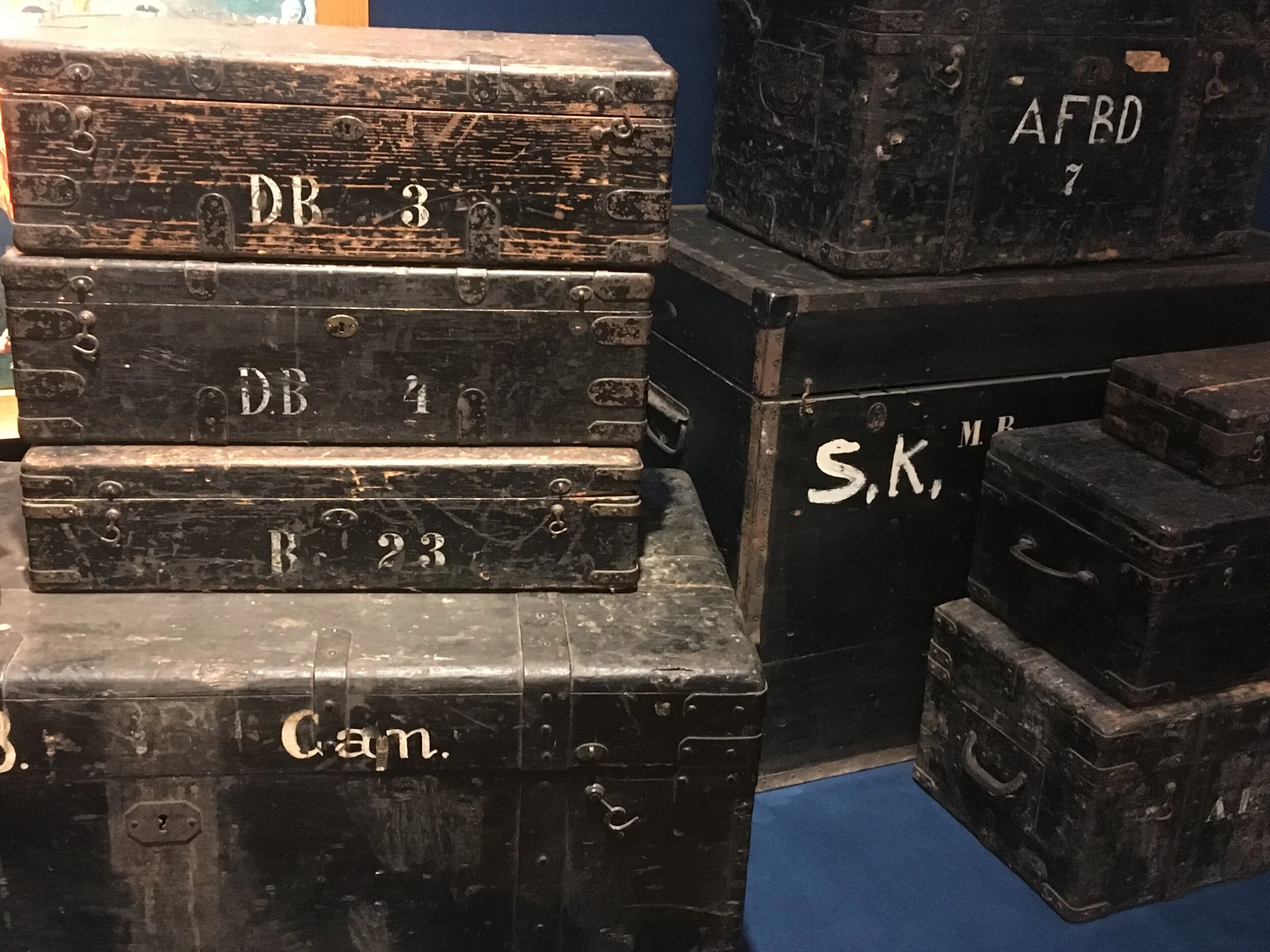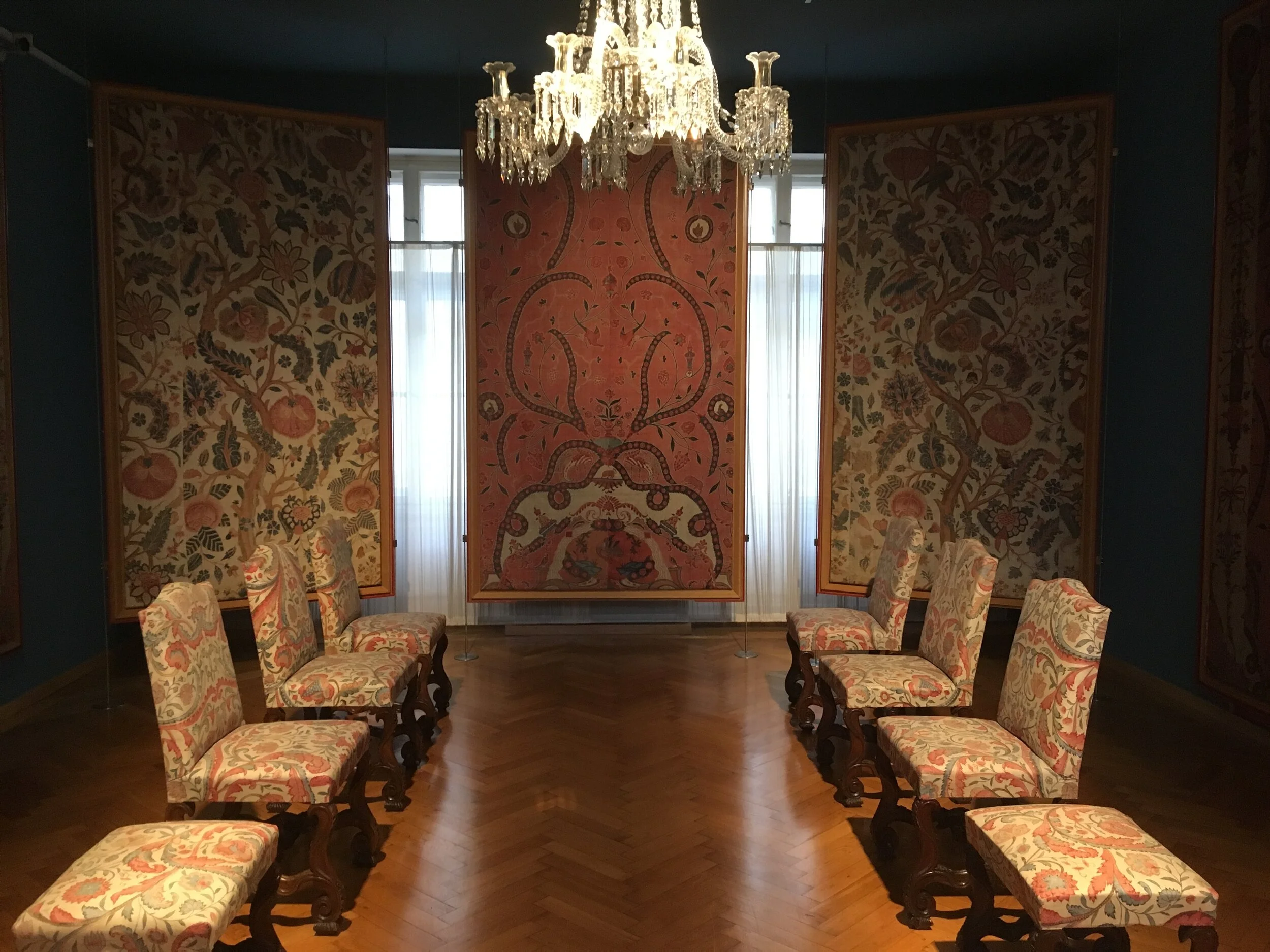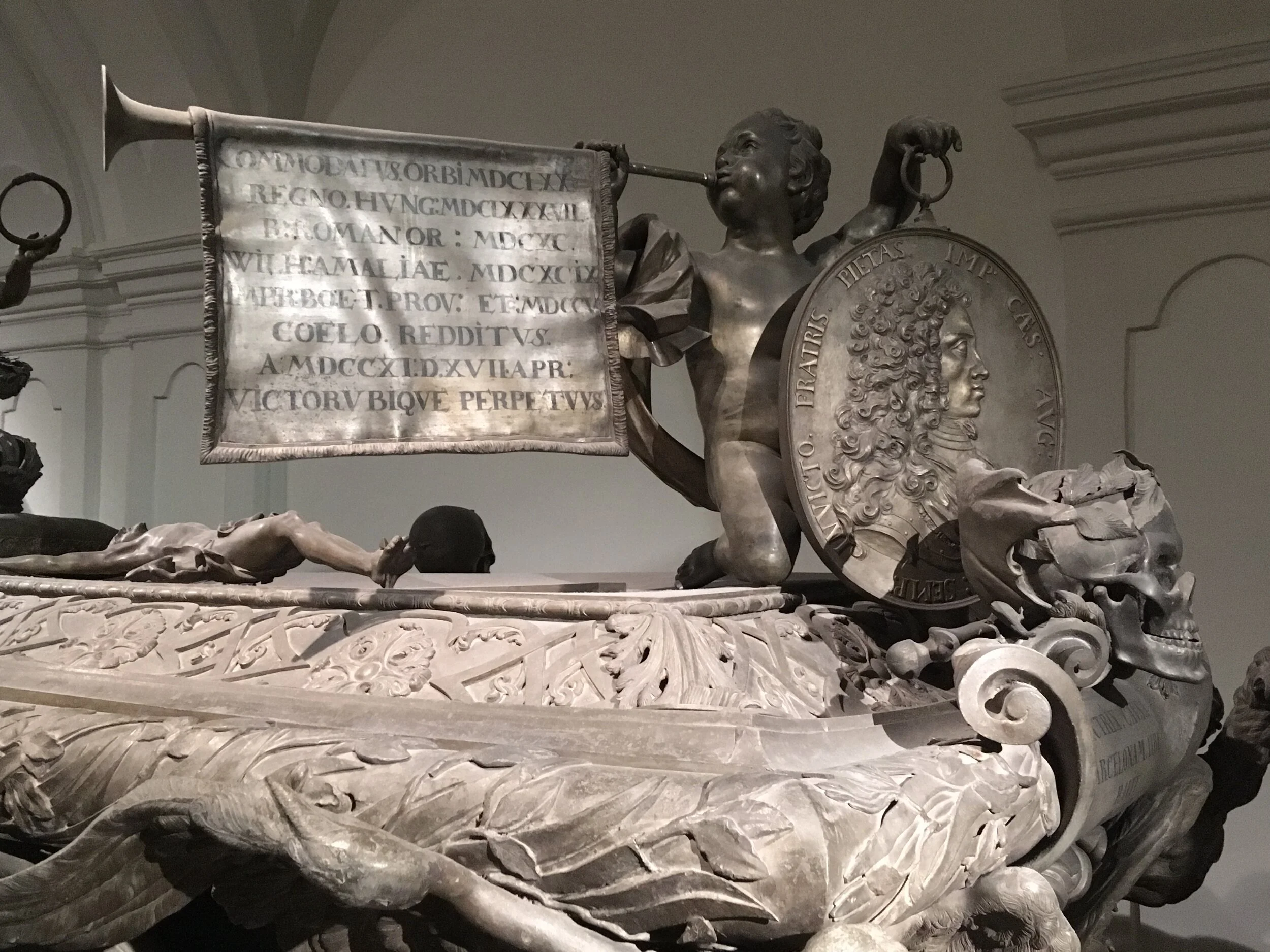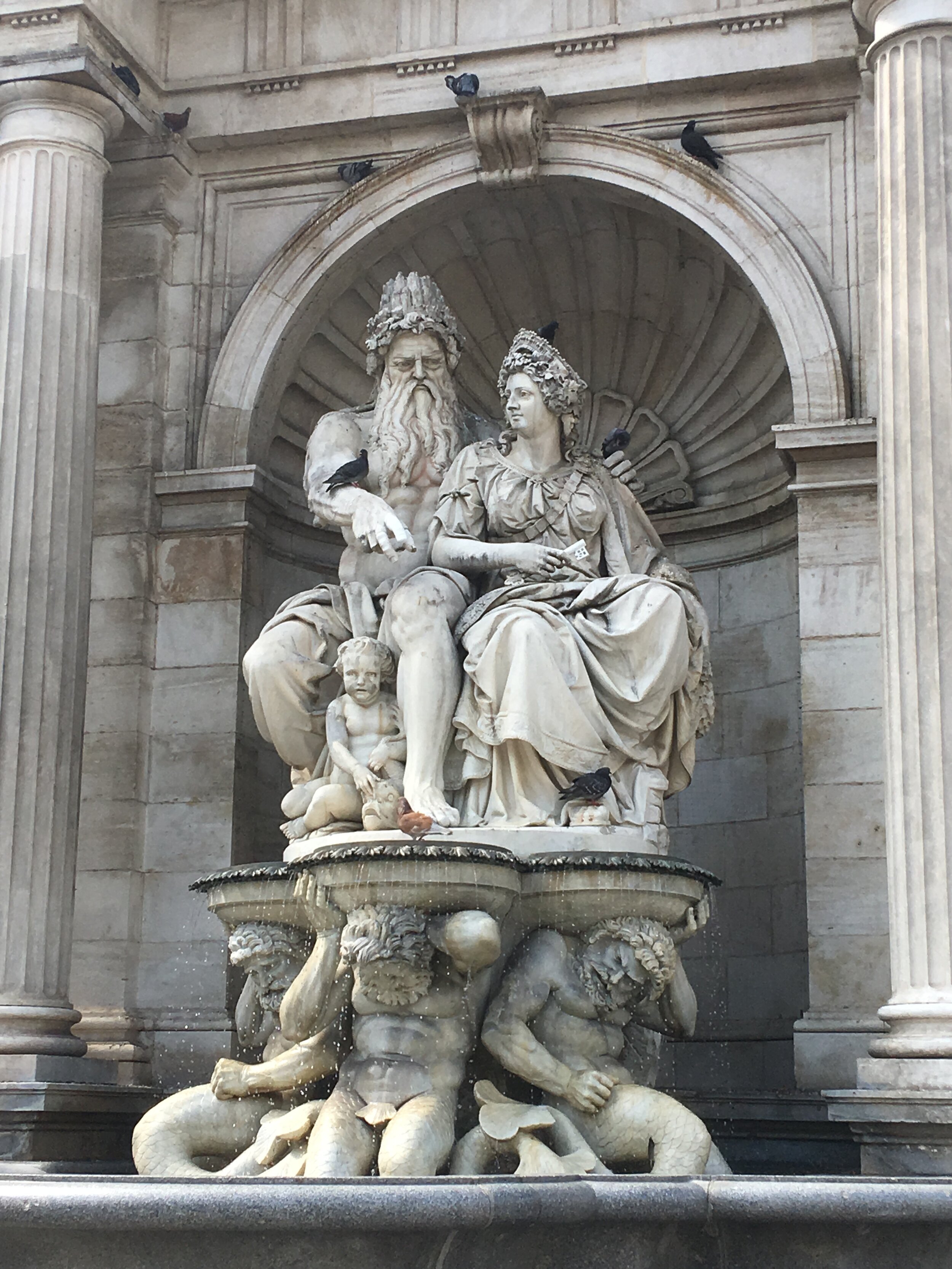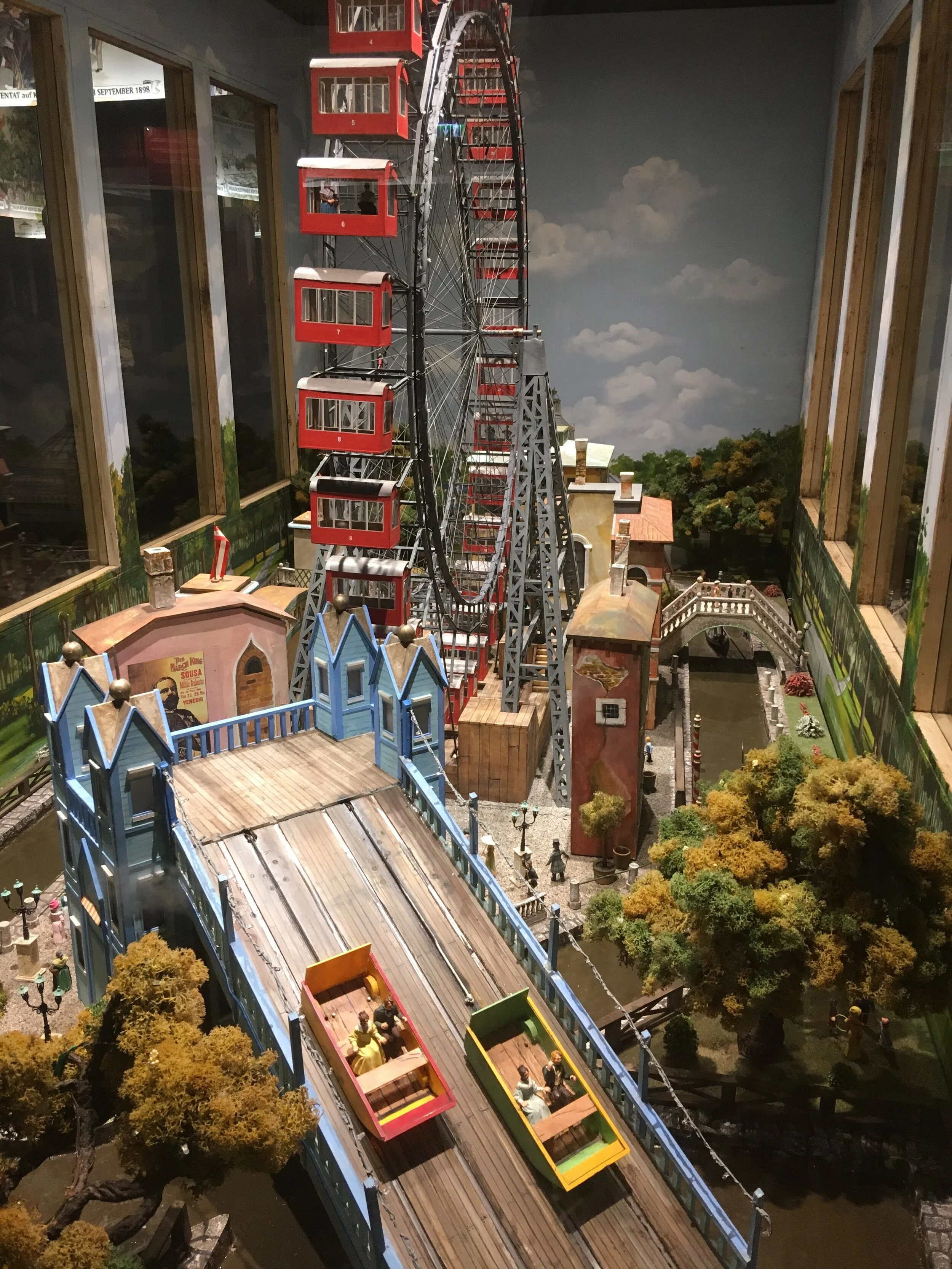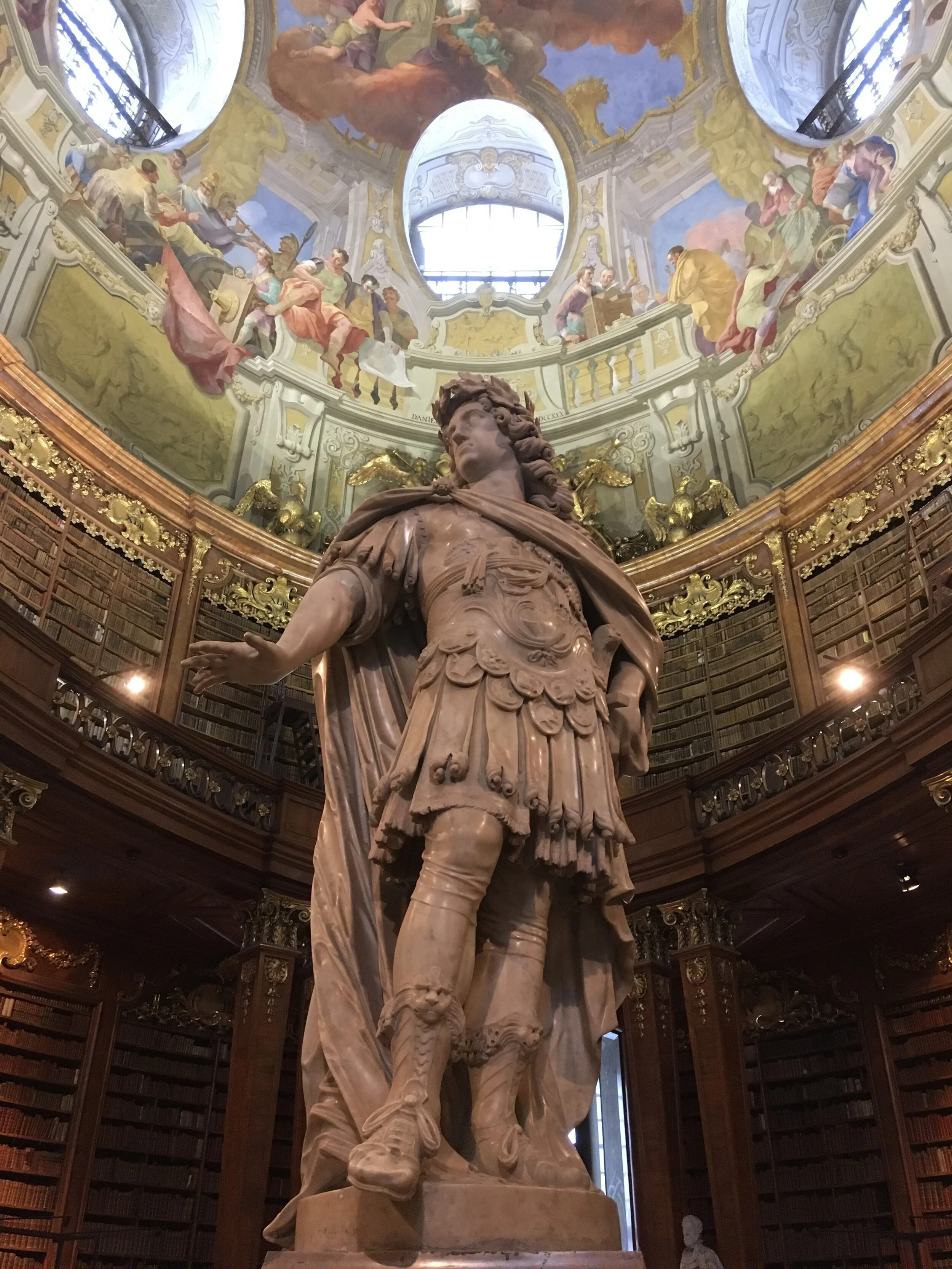Of furniture and pharmacies
It was really hot in Central and Eastern Europe at the end of July. We were lucky enough to be there on our delayed honeymoon, travelling to Budapest, Bratislava and Vienna. With the sun beating down outside, it was the perfect time to visit some nice, cool museums (as well as regular ice creams and cold beers).
We visited a lot of smaller, unexpected museums (learning from our experiences in Paris earlier in the year) and somehow we managed to focus on a lot of pharmacies and furniture collections.
First up was the Golden Eagle Pharmacy in Budapest, a glorious little museum in the centre of historic Buda. Housed in the ground floor of the first professional pharmacy in the city, the Golden Eagle was run by an alchemist in the 1730s-50s. The displays include a reconstructed alchemist’s laboratory, complete with stuffed crocodile hanging from the ceiling, as well as original wall paintings.
I think my favourite museum of the whole trip was the Kiscelli Museum at the feet of the Obuda hills. It’s a wonderfully eclectic mix of history and art collections, including shop signs, sculpture, printing presses and Hungarian art. There’s also the complete furnishings of a 19th-century apothecary transplanted from Kálvin tér in the city centre. Housed in a baroque monastery and including the vast empty halls of the old chapel, this museum was a joy.
Our tour included one more pharmacy, the tiny Red Crayfish Pharmacy in Bratislava. The ticket price included a visit to the Museum of Arms in St Michael’s Gate, with fabulous views over the historic city centre from the top of the tower. We had extra appreciation for the original Red Crayfish street sign after our visit to the Kiscelli museum. Inside the museum has the pharmacy’s original furnishings, as well as a display of beautiful pharmacy jars, from pewter to hand-painted glass.
Compared to these trappings of intellectual and wealthy city life, the Skanzen Village Museum, just outside Szentendre, near Budapest, brings together a range of traditional rural buildings in regional clusters. The houses are fitted out with contemporary furniture, crockery and textiles, as well as the trappings of various trades, from tanning to brewing. I was particularly struck by the decorative ceramic stoves, and the height of the beds. There’s also a working farm, a mill, a village store, and it’s a wonderful insight into traditional Hungarian life.
In Bratislava, I was geekily excited by an exhibition in the castle, staged by the Slovak National Museum. ‘Furniture in the Museum’ beautifully presented the process of caring for a furniture collection, from acquisition and documentation, to conservation, storage and display. The design was simple but compelling and perfectly evoked the background processes of a museum and the careful decisions made by staff. An impressive contemporary commission alongside brought new life to the story of traditional Slovakian chests.
Onwards to Vienna and we escaped the usual crowds that follow in the footsteps of Princess Elizabeth, known as Sissi, by visiting the Hofmobiliendepot. This is the warehouse complex built in 1901 to house the furniture collection of the Hapsburg emperors, which travelled with them between palaces rather than being assigned a permanent location. The displays are extensive and impressive, split between period rooms, chronological displays on the Hapsburg family, and open storage. I particularly liked the interventions in the open store that showed how furniture from the collection featured in the famous trilogy of Sissi movies, with items picked out in colour in the original black and white film scenes.
I’ve written before about my love for the Vienna MAK, so here I’ll only reiterate the brilliance of the gallery displaying Art Nouveau chairs. The artist Barbara Bloom has displayed them in two ranks, backlit behind a white screen so that, walking down the centre of the gallery, you see simply the elegant silhouettes, before focusing on the furniture details from the other side. Panels at the end draw nice connections between the silhouettes and the monochrome engraved chairs advertised in contemporary furniture catalogues. I may have to start a #MuseumofSilhouettes as a sibling to the #MuseumofShadows.
I can’t say I expected my honeymoon to be dominated by chairs and pharmacy jars, but this was another great example of the joy to be found in museums off the tourist beaten track, and of the fascination in unexpected collections.
